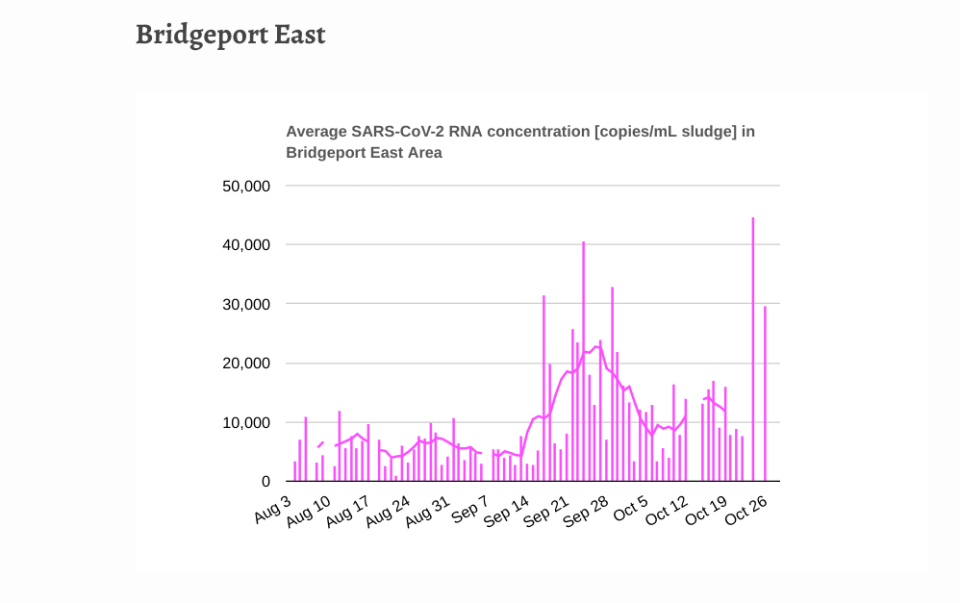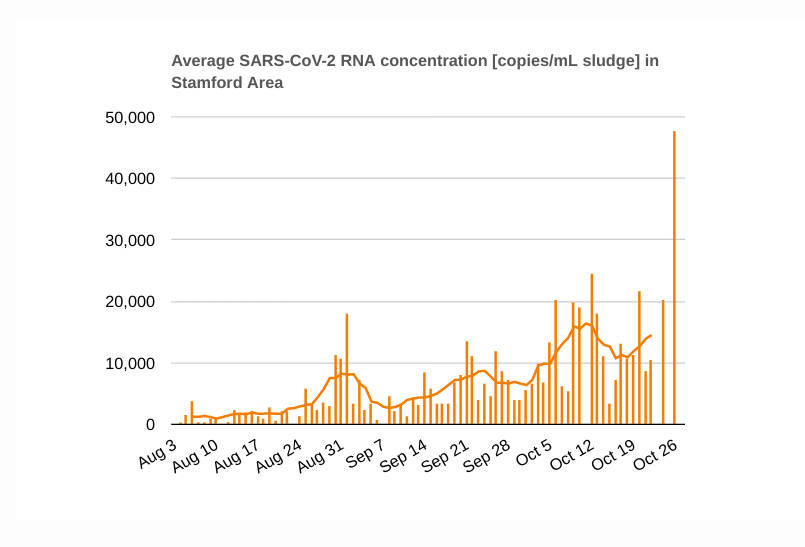High Virus Concentrations Found In Stamford, Bridgeport Sewage
STAMFORD, CT — A spike in COVID-19 infections may coincide with an increase in the virus being detected in sewage in Stamford and Bridgeport, according to Yale researchers.
The SARS-CoV-2 ribonucleic acid, known as RNA, concentration in the wastewater from Bridgeport and Stamford spiked in the last week, according to data from the Yale School of Public Health.
Researchers found that the virus that causes COVID-19, when found in municipal sewage, is a predictor of epidemic infection rates.
"SARS-CoV-2 RNA concentration in primary sludge closely followed the epidemiology curves established by compiled COVID-19 testing data and hospital admissions, but was a leading indicator by seven and three days, respectively," a Yale public health study on concentrations in municipal sewage sludge as a leading indicator of COVID-19 outbreak dynamics reads.
"Our study could have substantial policy implications. Jurisdictions can use primary sludge SARS-CoV-2 concentrations to preempt community outbreak dynamics or provide an additional basis for easing restrictions, especially when there are limitations in clinical testing. Raw wastewater and sludge-based surveillance is particularly useful for low and middle-income countries where clinical testing capacity is limited."
According to Yale’s Grubaugh Lab, the data reflects the number of viruses per milliliter of primary sludge. It’s explained this way: “A general rule of thumb is that a virus concentration value between 1,000 to 2,000 RNA copies per mL roughly equates to 1 new daily case per 100,000 population. For example, a virus RNA value of 6,000 genome copies per mL in New Haven’s facility, would roughly equate to 3 to 6 new cases/100K that day for the population (New Haven, Hamden, East Haven, part of Woodbridge) served by this treatment facility.”
Bridgeport, with a population 140,000, is served by two wastewater treatment facilities: the Bridgeport East Side plant covers 25 percent of the city and parts of southern Trumbull. The West Side plant covers the remaining 75 percent of the city’s population.
The Yale health graph shows the average concentration of the virus at Bridgeport East, which has been below 10,000 for months, began increasing in late September with the greatest spike seen this week to around 45,000.

And at Bridgeport West, this week it rose to around 70,000.

In Stamford, where the Water Pollution Control Facility serves 200,000 people in Stamford and Darien, similarly saw a drastic uptick to almost 50,000 milliliters.

As was pointed out by meteorologist Ryan Hanrahan on Facebook Wednesday morning, data from the New Haven treatment plant paints a dispiriting picture.
“Discouraging news from New Haven this morning. A sharp increase in the concentration of SARS-CoV-2 RNA concentration in the wastewater from metro New Haven," he wrote. "This has been shown to be a leading indicator of a spike in cases, hospitalizations, and deaths.”
This article originally appeared on the Stamford Patch

